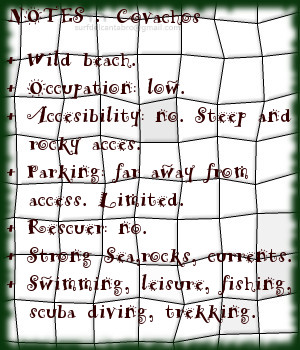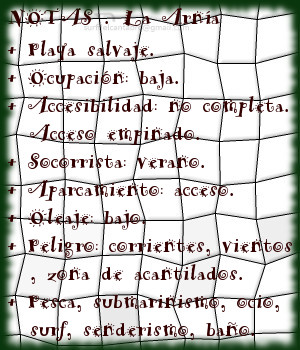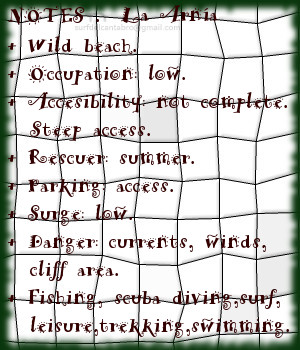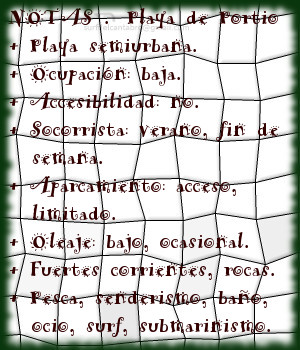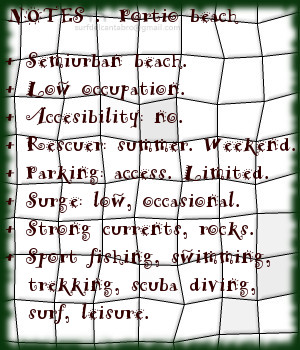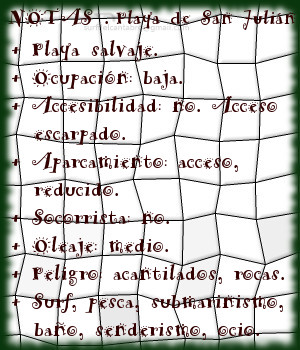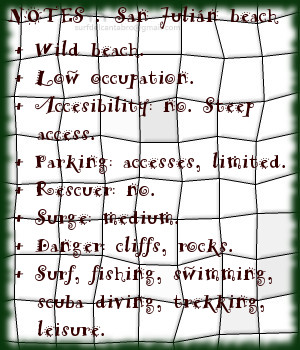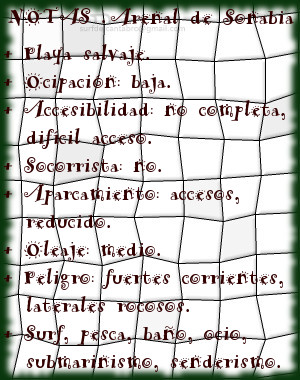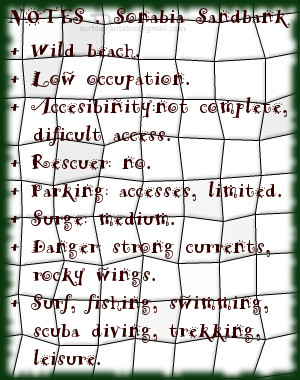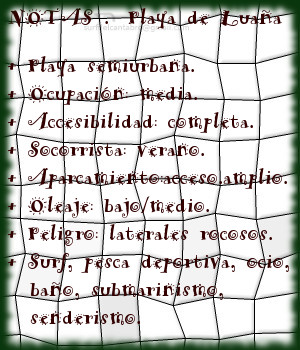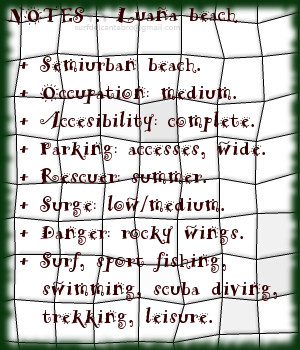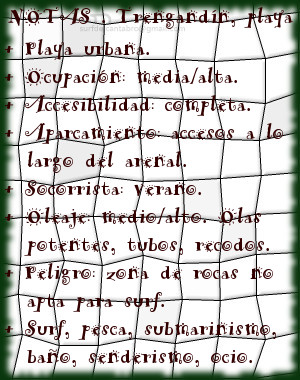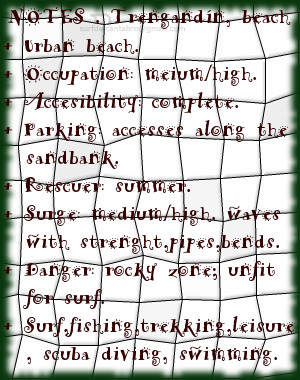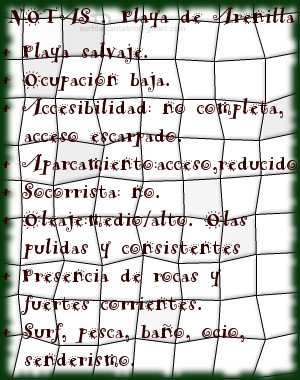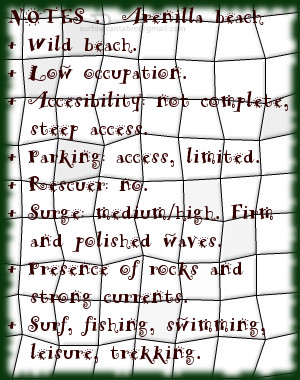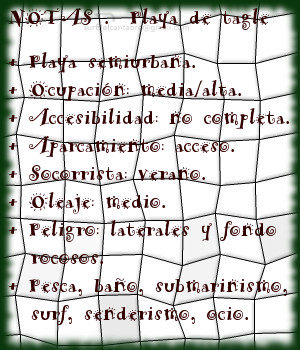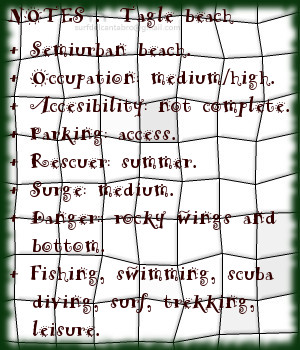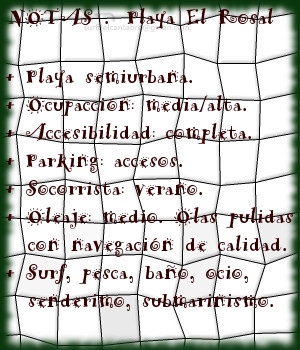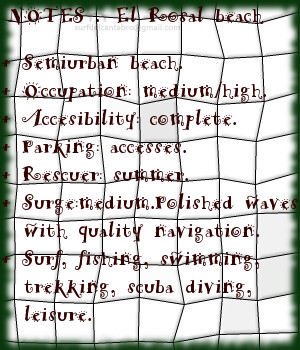Covachos, playa
![]() La playa de Covachos se encuentra en la localidad de Soto de la Marina, perteneciente al municipio de Santa Cruz de Bezana; en la costa central de Cantabria. Esta especial cala, emplazada en un entorno idílico, tiene una longitud aproximada de 300 metros y 20 metros de anchura media que se distribuyen en dos pequeñas calas separadas en marea alta. La bajamar descubre completamente la playa, apareciendo un arenal con forma de media luna que conecta la línea de costa con la Isla del Castro a través de su fina y dorada arena.
La playa de Covachos se encuentra en la localidad de Soto de la Marina, perteneciente al municipio de Santa Cruz de Bezana; en la costa central de Cantabria. Esta especial cala, emplazada en un entorno idílico, tiene una longitud aproximada de 300 metros y 20 metros de anchura media que se distribuyen en dos pequeñas calas separadas en marea alta. La bajamar descubre completamente la playa, apareciendo un arenal con forma de media luna que conecta la línea de costa con la Isla del Castro a través de su fina y dorada arena.
Los acantilados de Covachos, curvan su recorrido y contienen al arenal. Desde ese anfiteatro y a mano derecha, continua la playa paralela a la costa. La Isla del Castro delimita su parte final y dispone dos vertientes para el disfrute. La primera zona que da a la ensenada, formada por el entorno, es una zona tranquila y protegida del Mar Cantábrico. La zona este da entrada a las aguas de mar abierto.
El descanso sobre la arena de Covachos relaja al caminante. La contemplación de su entorno oxigena el ánimo a través de la catarsis producida por la naturaleza y su arte. El inicio se convierte en final y la perspectiva cambia a cada paso, pues en pocos metros aparecen muchas posibilidades.
El acceso elevado y escarpado que desciende hasta la arena, la presencia de rosas y las corrientes que rigen las mareas de la zona aconsejan precaución en Covachos y permitir así que la zona capture la atención que el paso del tiempo hará permanecer en el recuerdo.
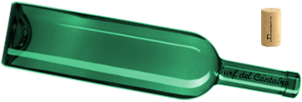
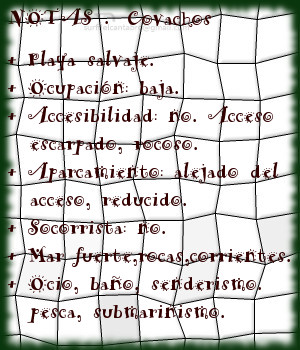
Covachos, beach
![]() The beach of Covachos is in the locality of Soto de la Marina, belonging to the municipality of Santa Cruz de Bezana; on the central coast of Cantabria. This special cove located in an idyllic environment, has an approximate length of 300 meters and 20 meters of average width that are distributed in two small coves separated in high tide. The low tide discovers completely the beach, appearing a sandbank with form of half moon that connects the line of coast with the Island of the Castro across its thin and golden sand.
The beach of Covachos is in the locality of Soto de la Marina, belonging to the municipality of Santa Cruz de Bezana; on the central coast of Cantabria. This special cove located in an idyllic environment, has an approximate length of 300 meters and 20 meters of average width that are distributed in two small coves separated in high tide. The low tide discovers completely the beach, appearing a sandbank with form of half moon that connects the line of coast with the Island of the Castro across its thin and golden sand.
The cliffs of Covachos curl its tour and contain to the sandbank. From this amphitheatre, to right side, the beach continues parallel to the coast. The Island of the Castro delimits its final part and arranges two slopes for the enjoyment. Its first zone that gives to the inlet formed by the environment, is a calm zone protected from the Cantabrian Sea. The east zone gives entry to the waters of open sea.
The repose on Covachos’s sand relaxes the wayfarer. The contemplation of its environment oxygenates the spirit across the catharsis produced by the nature and its art. The beginning turns in end and the perspective changes to every step, since in few meters many possibilities appear.
The slope and steep access that descends up to the sand, the presence of rocks and the currents that govern the tides of the zone, advise precaution in Covachos and so to allow the zone capture the attention that the passage of time will make remain in the recollection.

